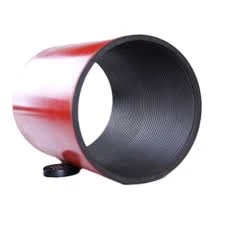- Afrikaans
- Albanian
- Amharic
- Arabic
- Armenian
- Azerbaijani
- Basque
- Belarusian
- Bengali
- Bosnian
- Bulgarian
- Catalan
- Cebuano
- Corsican
- Croatian
- Czech
- Danish
- Dutch
- English
- Esperanto
- Estonian
- Finnish
- French
- Frisian
- Galician
- Georgian
- German
- Greek
- Gujarati
- Haitian Creole
- hausa
- hawaiian
- Hebrew
- Hindi
- Miao
- Hungarian
- Icelandic
- igbo
- Indonesian
- irish
- Italian
- Japanese
- Javanese
- Kannada
- kazakh
- Khmer
- Rwandese
- Korean
- Kurdish
- Kyrgyz
- Lao
- Latin
- Latvian
- Lithuanian
- Luxembourgish
- Macedonian
- Malgashi
- Malay
- Malayalam
- Maltese
- Maori
- Marathi
- Mongolian
- Myanmar
- Nepali
- Norwegian
- Norwegian
- Occitan
- Pashto
- Persian
- Polish
- Portuguese
- Punjabi
- Romanian
- Russian
- Samoan
- Scottish Gaelic
- Serbian
- Sesotho
- Shona
- Sindhi
- Sinhala
- Slovak
- Slovenian
- Somali
- Spanish
- Sundanese
- Swahili
- Swedish
- Tagalog
- Tajik
- Tamil
- Tatar
- Telugu
- Thai
- Turkish
- Turkmen
- Ukrainian
- Urdu
- Uighur
- Uzbek
- Vietnamese
- Welsh
- Bantu
- Yiddish
- Yoruba
- Zulu
coupling for tubing
Understanding Coupling for Tubing An Essential Component in Oil and Gas Industry
In the oil and gas industry, the efficiency and safety of operations heavily depend on the quality of the equipment used, especially when it comes to the transportation of fluids through tubing. One of the key components in tubing systems is the coupling, which plays a crucial role in ensuring the structural integrity and performance of the tubing.
What is a Coupling?
A coupling is a mechanical device used to connect two sections of tubing or pipe, allowing for the continuous flow of fluids. These connectors serve various purposes, including facilitating the easy assembly and disassembly of tubing systems, compensating for thermal expansion and contraction, and accommodating movements caused by ground shifts or pressure changes. In essence, couplings are vital for maintaining the operability of a tubular system and ensuring that it can withstand the challenging environments typically encountered in oil and gas extraction.
Types of Couplings
There are several types of couplings used for tubing, each designed for specific applications and conditions
1. Threaded Couplings These are the most common type of couplings where the ends of the tubing are machined with threads that allow for easy connection. Threaded couplings can be further categorized into API (American Petroleum Institute) and non-API threads based on industry standards.
2. Welded Couplings For applications where a more permanent connection is required, welded couplings provide a robust solution. The tubing ends are welded together, creating a strong bond that can withstand significant pressure and stress.
3. Flange Couplings These couplings use flanges to connect the tubing. Flange couplings are particularly advantageous when there is a need for quick disconnection, as they can be easily bolted together and taken apart.
coupling for tubing

4. Compression Couplings These are used when joining dissimilar materials or when a flexible connection is required. Compression couplings accommodate a small degree of movement between connected sections, making them ideal for applications where vibration or thermal expansion might occur.
Materials and Design Considerations
The design and material selection for couplings are critical, as they must endure harsh conditions, including high pressures, corrosive environments, and temperature fluctuations. Common materials for couplings include carbon steel, stainless steel, and special alloys designed to resist corrosion and fatigue.
The design of the coupling must also consider factors such as the diameter of the tubing, the expected pressure and temperature conditions, and the nature of the fluids being transported. It is essential for engineers and designers to work closely with manufacturers to ensure that the chosen coupling meets all operational requirements.
Installation and Maintenance
Proper installation and maintenance of couplings are essential to prevent leaks and potential failures in the tubing system. During installation, it is crucial to follow the manufacturer's specifications for torque and alignment to ensure a secure connection. Regular inspections and maintenance schedules should also be established to identify wear or damage to couplings before they lead to significant issues.
Conclusion
In conclusion, coupling for tubing is a vital aspect of the oil and gas industry, facilitating the safe and efficient transportation of fluids. With various types available, it is important for operators to choose the right coupling based on their specific needs and operational conditions. As technology continues to evolve, innovations in coupling materials and designs are likely to enhance their performance and reliability even further, ensuring the continued success of oil and gas operations worldwide. Proper understanding and maintenance of these critical components will ultimately contribute to a safer and more efficient industry.
-
Well Casing Extension Couplings – Applications and InstallationNewsJun.06,2025
-
Types of Crossover Subs in Drilling & CompletionNewsJun.06,2025
-
Key Features of High-Quality Tubing Pup JointsNewsJun.06,2025
-
Installation and Maintenance Tips for Steel Couplings for PipeNewsJun.06,2025
-
How to Select the Right Pup Joint for Oil & Gas OperationsNewsJun.06,2025
-
Applications of Stainless Steel Pipe CouplingsNewsJun.06,2025







